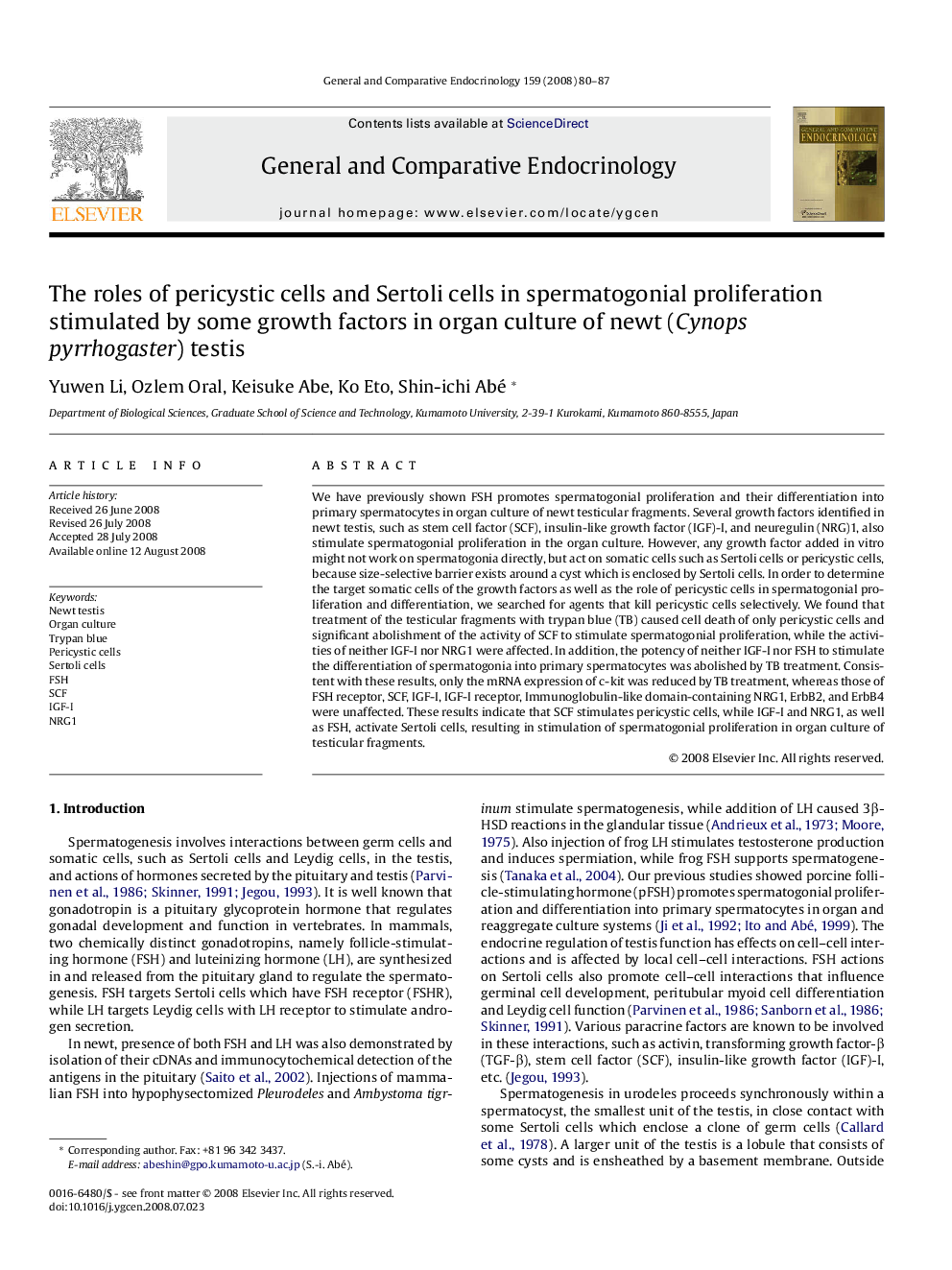| Article ID | Journal | Published Year | Pages | File Type |
|---|---|---|---|---|
| 2801580 | General and Comparative Endocrinology | 2008 | 8 Pages |
We have previously shown FSH promotes spermatogonial proliferation and their differentiation into primary spermatocytes in organ culture of newt testicular fragments. Several growth factors identified in newt testis, such as stem cell factor (SCF), insulin-like growth factor (IGF)-I, and neuregulin (NRG)1, also stimulate spermatogonial proliferation in the organ culture. However, any growth factor added in vitro might not work on spermatogonia directly, but act on somatic cells such as Sertoli cells or pericystic cells, because size-selective barrier exists around a cyst which is enclosed by Sertoli cells. In order to determine the target somatic cells of the growth factors as well as the role of pericystic cells in spermatogonial proliferation and differentiation, we searched for agents that kill pericystic cells selectively. We found that treatment of the testicular fragments with trypan blue (TB) caused cell death of only pericystic cells and significant abolishment of the activity of SCF to stimulate spermatogonial proliferation, while the activities of neither IGF-I nor NRG1 were affected. In addition, the potency of neither IGF-I nor FSH to stimulate the differentiation of spermatogonia into primary spermatocytes was abolished by TB treatment. Consistent with these results, only the mRNA expression of c-kit was reduced by TB treatment, whereas those of FSH receptor, SCF, IGF-I, IGF-I receptor, Immunoglobulin-like domain-containing NRG1, ErbB2, and ErbB4 were unaffected. These results indicate that SCF stimulates pericystic cells, while IGF-I and NRG1, as well as FSH, activate Sertoli cells, resulting in stimulation of spermatogonial proliferation in organ culture of testicular fragments.
